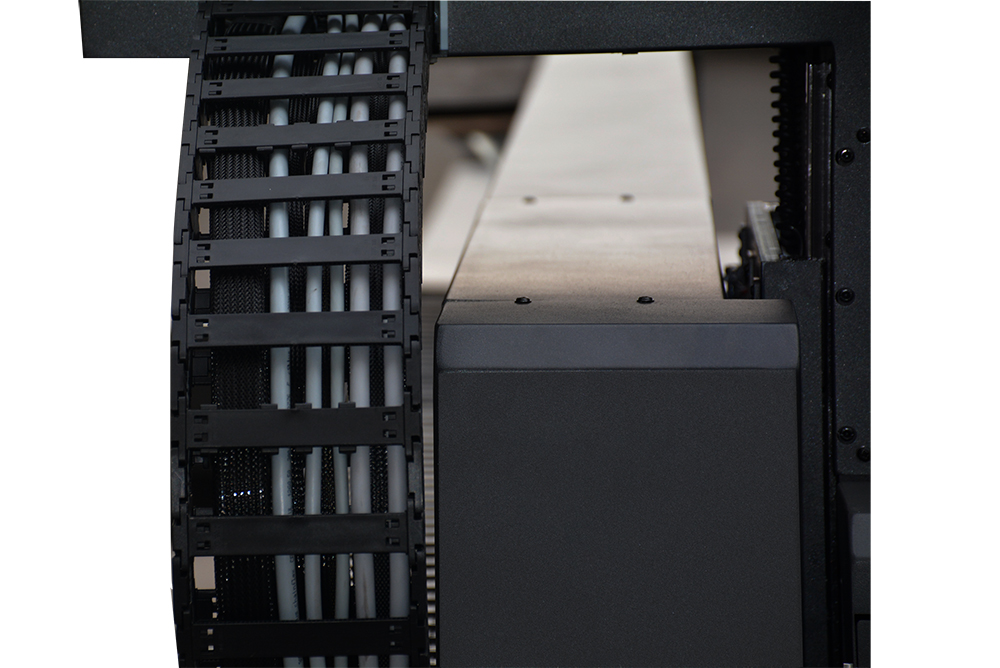The Environmental Impact of UV Flatbed Printing
The Environmental Impact of UV Flatbed Printing
In the realm of digital printing, UV flatbed printing has emerged as a versatile and efficient technology, offering high-quality prints on a wide range of materials. This printing method employs ultraviolet (UV) light to cure or dry ink instantly after it is applied to the substrate. While UV flatbed printing boasts numerous advantages, including fast curing times, durability, and the ability to print on diverse surfaces, its environmental impact cannot be overlooked. This article explores the environmental implications of UV flatbed printing, examining both its positive and negative aspects, and discussing potential strategies for mitigating its adverse effects.

Positive Environmental Aspects
Reduced VOC Emissions: Traditional printing methods often involve solvents that emit volatile organic compounds (VOCs) into the atmosphere. UV flatbed printing, however, utilizes inks that are cured by UV light, eliminating the need for solvents and significantly reducing VOC emissions. This reduction is particularly beneficial for both indoor air quality and the broader environment, as VOCs can contribute to smog formation and have adverse health effects.
Energy Efficiency: The instant curing process of UV flatbed printing is highly energy-efficient. Compared to conventional drying methods that require heat and time, UV curing consumes less energy overall. This efficiency translates into lower greenhouse gas emissions from power generation, making UV flatbed printing a more environmentally friendly option in terms of energy consumption.
Minimal Waste Generation: UV flatbed printers are designed for precision and accuracy, which minimizes ink waste. Unlike some traditional printing methods where ink can be overapplied and later removed, UV inks are applied precisely where needed, reducing both material waste and the need for cleanup solvents.
Negative Environmental Aspects
UV Ink Composition: While UV inks are solvent-free, they often contain chemicals such as photoinitiators that may have environmental concerns. Some photoinitiators can be harmful if released into the environment, potentially affecting aquatic life and ecosystems. Proper waste management and disposal protocols are crucial to mitigate these risks.
UV Light Energy Consumption: Although the curing process is energy-efficient, the UV lamps themselves consume a significant amount of energy and can have a relatively short lifespan, requiring replacement. The production and disposal of these lamps can generate waste and contribute to environmental pollution if not managed properly.
Ozone Emission: The operation of UV lamps can produce ozone, a harmful air pollutant. In enclosed spaces, such as printing facilities, ozone levels can rise, posing health risks to workers and requiring adequate ventilation systems to maintain safe air quality.
Mitigating Strategies
Ink and Material Innovation: Manufacturers are continually working on developing UV inks with lower environmental impact, including those with bio-based or recycled content. Similarly, exploring sustainable substrate options can further reduce the overall environmental footprint of UV flatbed printing.
Energy-Efficient Equipment: Advancements in UV lamp technology are leading to more energy-efficient models with longer lifespans, reducing both energy consumption and waste generation from lamp replacements. Investing in the latest equipment can help printing businesses minimize their environmental impact.
Waste Management and Recycling: Implementing robust waste management practices, including the proper disposal of UV lamps and ink waste, is essential. Recycling programs for both consumables and equipment components can also contribute to a circular economy within the printing industry.
Ventilation and Air Quality Control: Ensuring adequate ventilation in printing facilities is crucial to maintaining a safe working environment and minimizing the release of ozone and other potential pollutants into the atmosphere.
Environmental Certifications and Standards: Adhering to environmental certifications and standards, such as ISO 14001 for environmental management systems, can help guide printing companies towards more sustainable practices. These standards provide a framework for continuous improvement and demonstrate a commitment to environmental responsibility.
Conclusion
UV flatbed printing offers numerous advantages in terms of print quality, versatility, and efficiency. However, its environmental impact cannot be ignored. By addressing the potential negative aspects through technological advancements, responsible material selection, waste management strategies, and adherence to environmental standards, the printing industry can continue to harness the benefits of UV flatbed printing while minimizing its ecological footprint. As consumers and businesses increasingly prioritize sustainability, the adoption of environmentally conscious practices in UV flatbed printing will not only protect the environment but also enhance the reputation and competitiveness of printing companies in the market. Through collaborative efforts and continuous innovation, the industry can strive towards a more sustainable future for digital printing.
